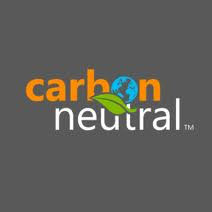Microsoft – the first company to impose an internal carbon fee – has released a "Carbon Fee Playbook" to help other businesses do the same based on its experiences.
The company is modeling how a carbon tax would work were it ever to be adopted by the US. Other businesses, nonprofits and government agencies might well want to do the same, as a way of pushing this all-important climate change remedy forward.
The Playbook details how Microsoft created and implemented its carbon fee and how it is successfully driving environmental awareness across the company, making sustainability an increasingly important part of how it does business.

"We now have a common language for how to drive awareness around [the environment] and begin to reduce emissions," says Microsoft in its Green Blog.
"Microsoft’s model is based purely on consumption – there’s nothing complicated to manage, no credits to track or trade. This simplicity is what makes the model so tranferable. It can be adapted easily to fit other corporations, nonprofit groups and government agencies," says Mindy Lubber, CEO of Ceres. "The basid formula is universal – carbon emissions multiplied by carbon price equals carbon fee. It’s simply a matter of tweaking the model to fit an organization’s structure, financial processes and individual goals."
5 Steps:
1. Calculate your carbon impact
2. Establish a carbon reduction policy and investment strategy
3. Determine the internal carbon price
4. Gain approval and establish governance and
feedback loops
5.
Administer the fee, communicate results, and evolve to increase impact
"The
carbon fee makes environmental impact a line item in the business group
managers’ budgets across our organization based on the levels of resource
consumption associated with generating carbon emissions. By doing so, the fee
helps educate the business groups on carbon emissions and elevate efficiency
and innovation within our business. By using a model in which groups are
charged a fee based on their actual total usage (rather than putting a cap on
usage or applying the fee to usage exceeding a pre-determined level), we keep
the model simple to administer and make the cost of emissions overt," Microsoft explains in the Carbon Fee Playbook.
Last month, Microsoft made its first major renewable energy purchase using funds generated from its carbon fee – it bought the entire output of a Texas wind farm to power a nearby data center.
Last week, CDP released a eye-opening report revealing that at least 29 major US corporations include a price on carbon as part of future financial projections, but Microsoft is the only company that has already deployed this internally to reduce emissions now.
Download the Carbon Fee Playbook:
